One big kayak trip, no backpacking, much bird photography most often by kayak. A few pika shoots. I only sought landscapes a couple times, pretty dismal really. But I like what I got this year while staying pretty close to home. Washington State has so much to offer photographers.
All images were shot with either the Sony A7 III or a6300. I’m still using a few Canon lenses, but the Sony 100-400mm f4.5-5.6 GM lens is the top performer.

Blood Moon. Kate’s family was visiting our Kirkland home the evening of the January Blood Moon, but I snuck out on the deck to capture this image. Despite shooting from the city, it was quite dark locally, and the sky clear (the next day I heard many local photographers were enveloped in fog). Of course a foreground element (like the space needle) would be nice, but I’m happy with this straight shot, made possible by the low-noise sensor in my Sony A7 III and 20-year-old good-glass Canon 500mm f4.
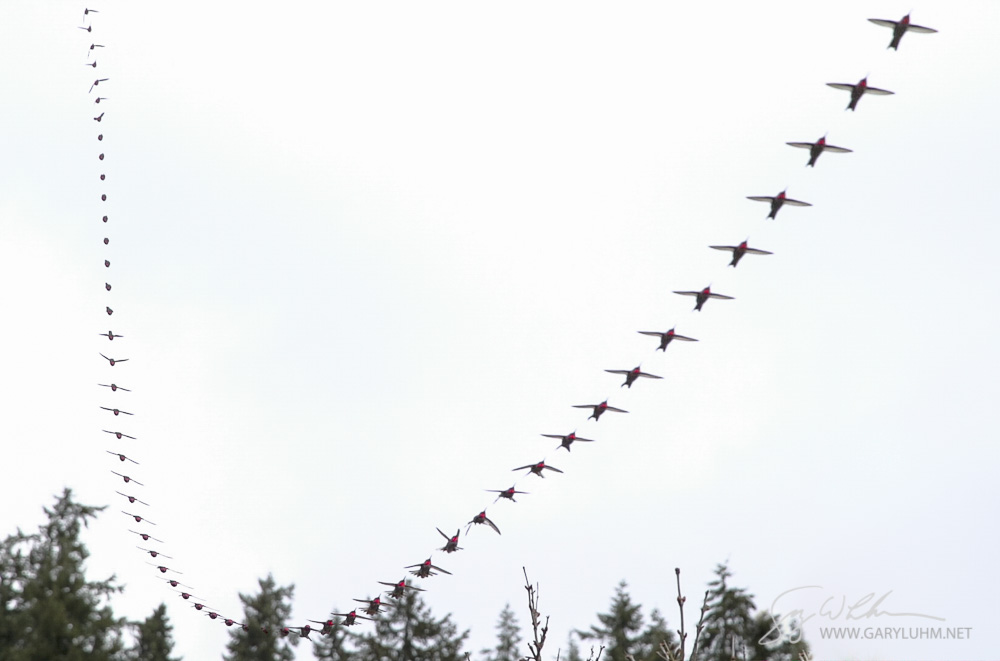
Strafed! In Washington State the Anna’s Hummingbird mating rituals heat up in March, continuing thru June. Courting begins with the male’s spectacular dives to impress a female. I hit upon a way to capture it by shooting video, and then combining many individual frame into one with photoshop. A couple things to note: I shot 1080p at 120 fps, so this isn’t a big image. Positioning the camera on tripod wasn’t difficult, because the male usually dives facing the sun, to best show his gorget. This particular hummer descent shows everything: a wing flapping start, a stoop with wings tucked, wings spreading to bank horizontally, tail spread to create a “vvittt” sound, recovery. The sequence may repeat up to a dozen times before the male attempts further romance.
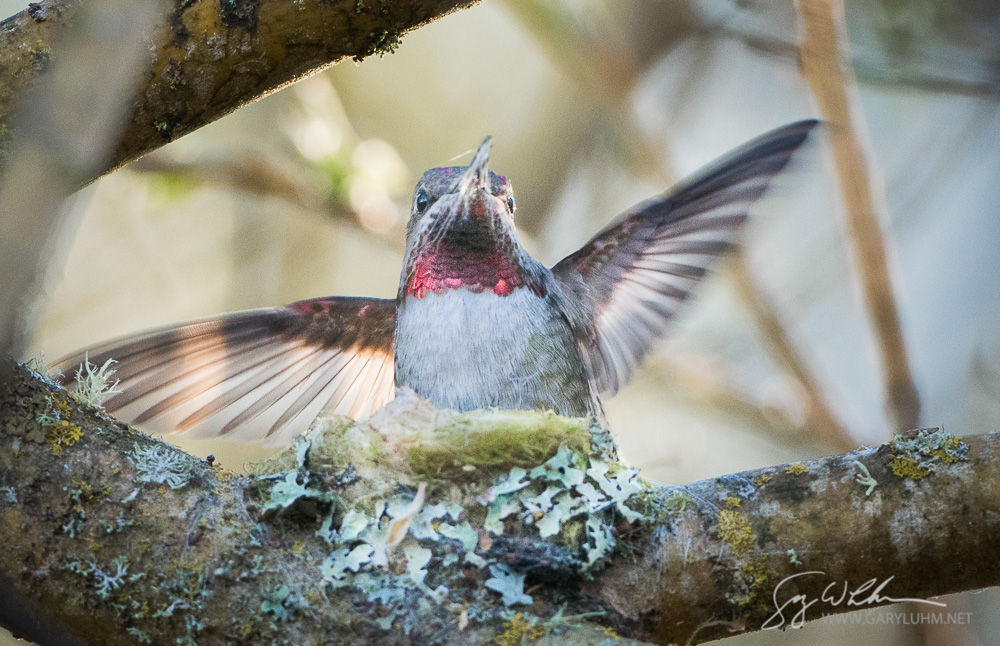
Nest Builder. End of March, and my wife Kate discovers an Anna’s Hummingbird female at her first day of nest building while on a bird walk at Juanita Bay Park. I insisted she show me, and the next morning I returned to witness construction. In a flurry of activity, lichen, moss and spider web were brought in one bit at a time and the tiny nest walls rose about her. Here she’s bringing in spider web, which was deftly stitched all around the base.
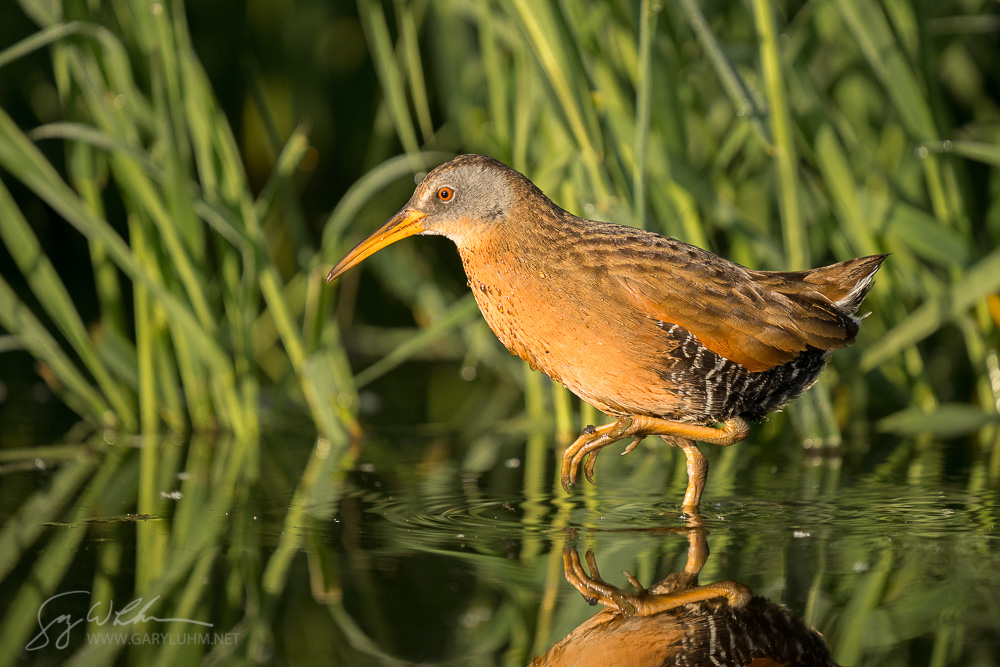
Virginia Rail. In early May, I paddled by kayak into Yarrow Bay and discovered this adult Virginia Rail in early morning light. Both rail and sora nest here, probably not far from the slough entrance. The muck that forms there attracts a diverse number of birds, including teal, mallard, snipe, killdeer and barn swallow (they like the mud for nest-building), as well as rail and sora.
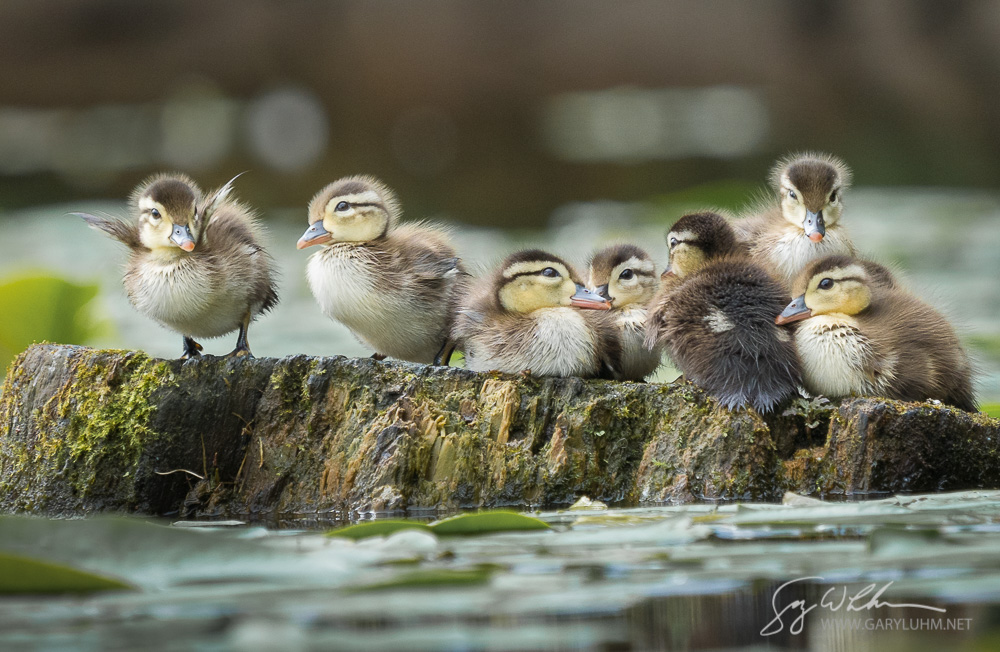
Ducklings. I discovered these little Wood Ducks near Foster Island in May. Mom was roosting with them, as I sat by kayak nearby. She surprised me by flying off, evidently to feed, and the little guys stayed put, leaving me with an even more compelling photo-op.
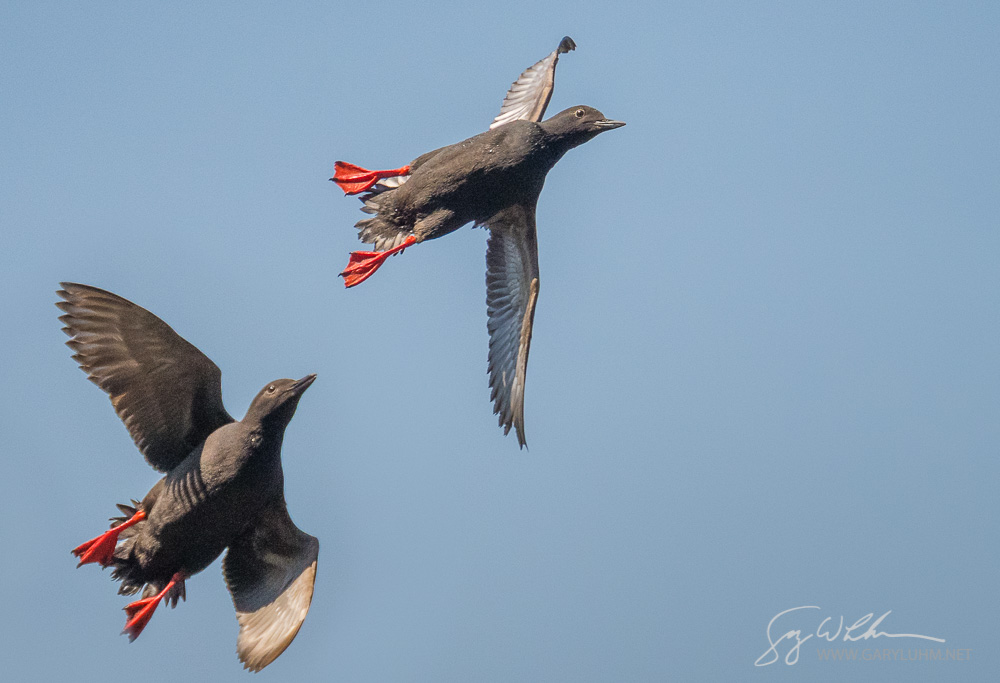
Maneuvers. Kate paddled all of Hood Canal last spring, in daily stretches of 8-12 miles. One morning I dropped her off, and then drove to the day’s take-out, a place where Pigeon Guillemots nested in cliffs above the road. Guillemots floated on the water, roosted at nest hole entrances and occasionally chased each other in flight. My Sony A7 III proved up to the task of tracking them, provided I could stay on the birds as I stood roadside trying to keep up.
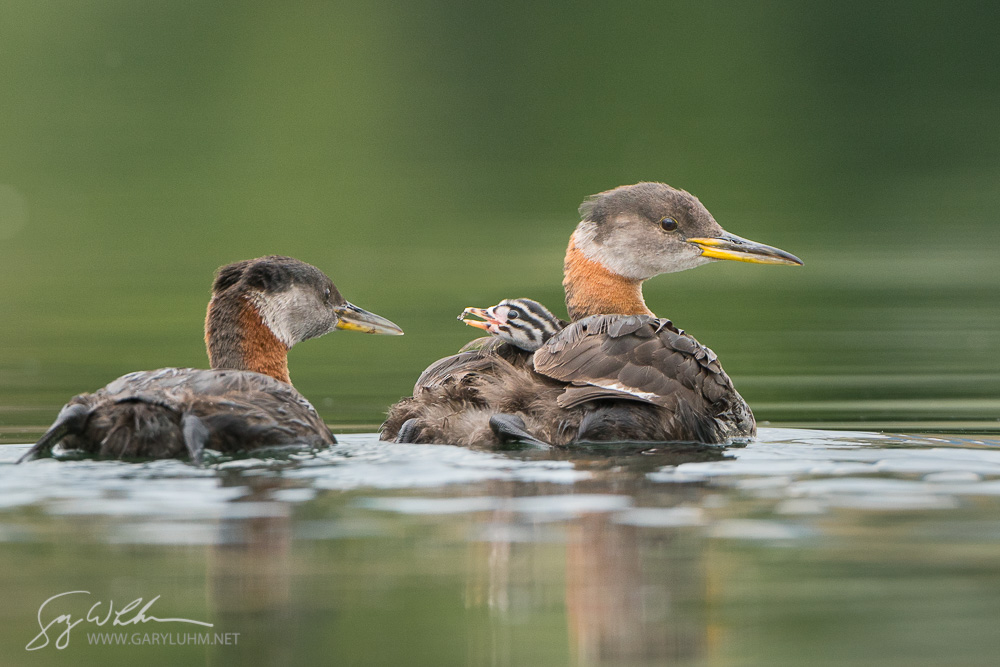
Family. Red-necked Grebes nest on a few eastern Washington State lakes, mostly in the Okanogan. Until now I’ve been skunked photographing parents with chicks aboard, in part because I wouldn’t visit in July. That’s when the chicks most often hatch, but it’s also uncomfortably hot. This year we found two new lakes─at cooler locations─with nesting birds. I made three trips, and finally got a shot I sought. Here the parents are feeding tiny insects gleaned from the water surface to a two-day-day old chick.

Nursing. I started a pika project two years ago. It keeps getting stifled from early snow, which turns out not so bad because we keep witnessing new behavior. At Mt. Rainier National Park, Dan and I discovered a pika mom with three kids. Each youngsters had its own little short-term territory within mom’s, and much to our amazement, she was still nursing them.
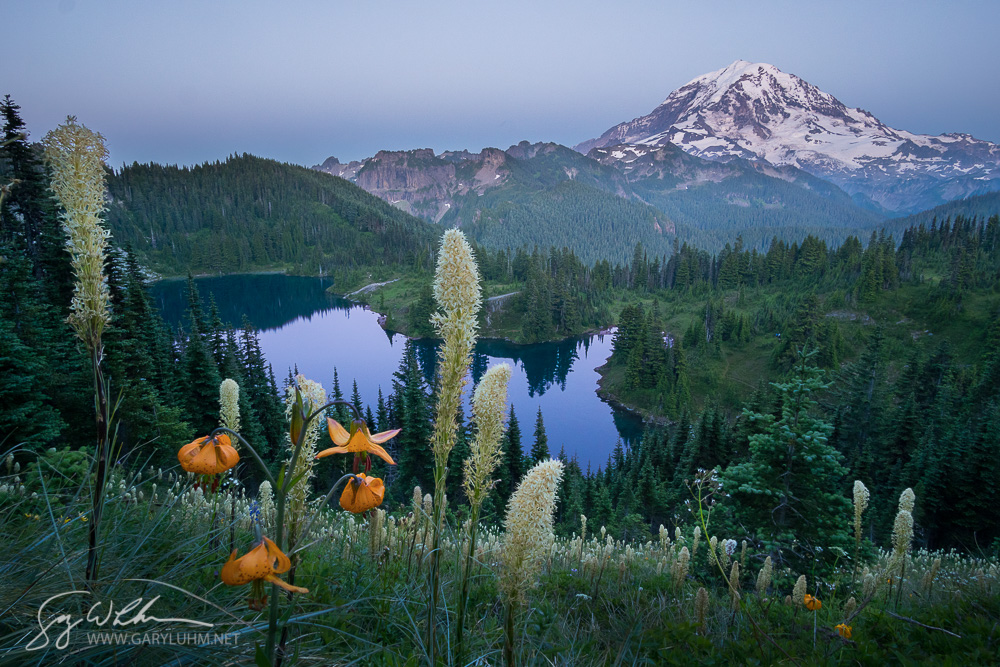
Blue Hour. Late July, we hiked to Eunice Lake at Mt Rainier for sunset, to capture the bear grass floral display with a lake and/or mountain backdrop. The sunset fizzled, but the breeze calmed at the lake, and the blue light on the mountain was magical. I focus stacked three images here to avoid diffraction.

Story. In August, Kate and I joined Sea Kayak Adventures on Vancouver Island for a 6-day, whale-watch, kayak camping adventure. We had rain and fog, then more rain and more fog. On day two, we got on the water early to avoid the swift currents that squeezed between islands, and lucky us, a pod of orca passed right by our rafted group. This shot tells the whole story, a rain-coated kayaker looking on as a female orca surfaces close by in drizzly Johnstone Strait.
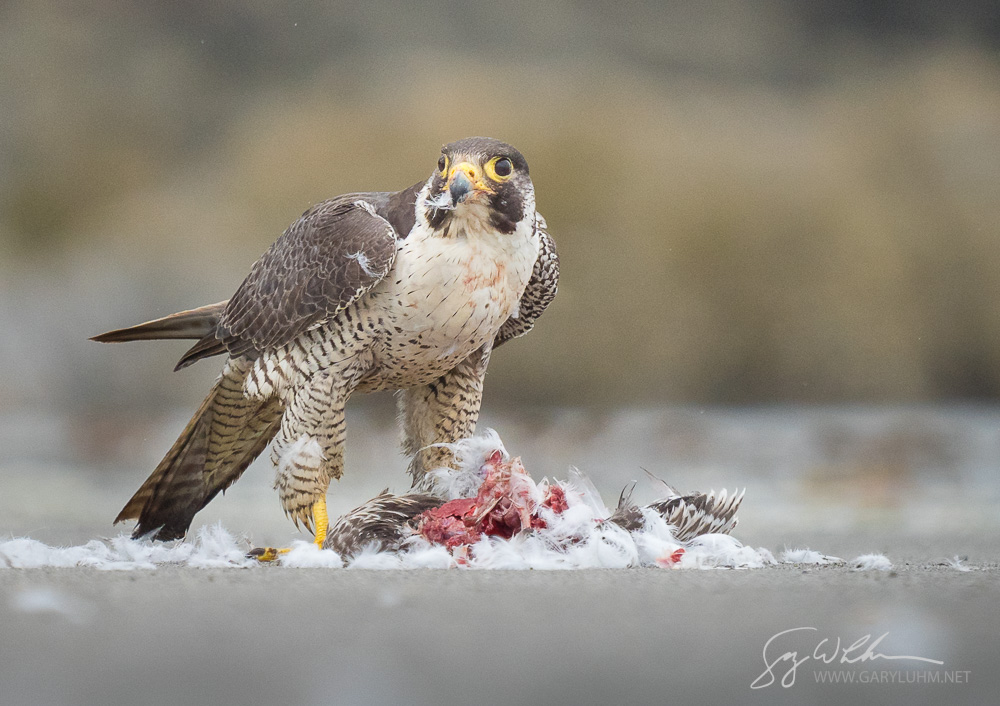
Beach Kill. At Makah Bay for the Washington Kayak Club summer pig roast, we discovered this Peregrine Falcon on a kill. I quickly got down to the bird’s eye level, belly-crawled forward to a nice framing, and got the shot.
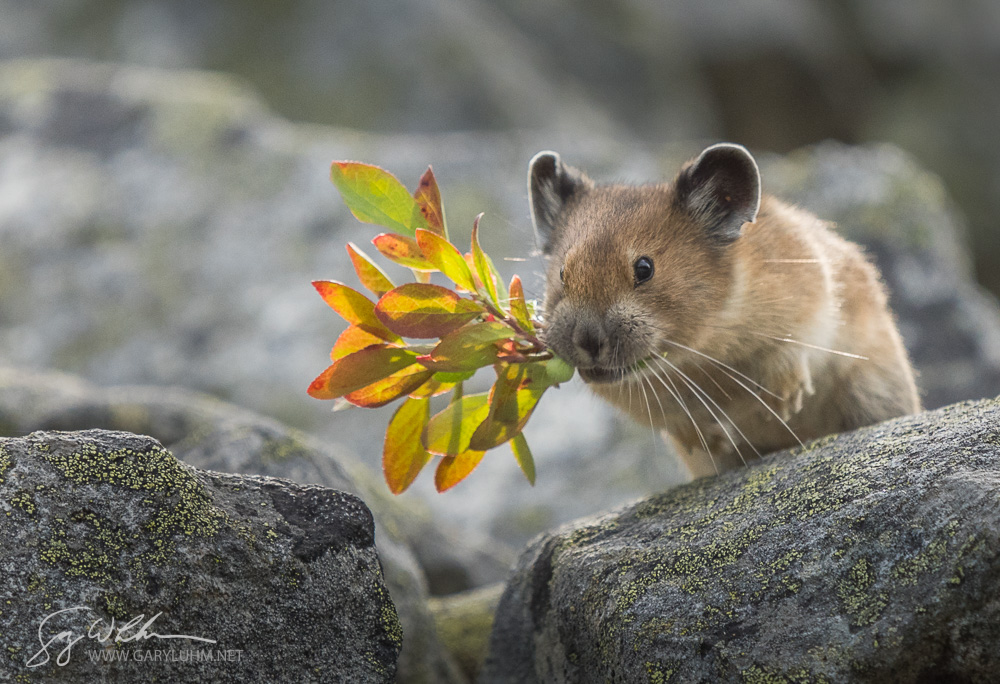
Harvest Leap. At Mt. Rainier for another pika shoot, we found the workers busy harvesting plants for their hay piles. Pika don’t hibernate, so the “hay” they gather keeps them fed through winter under the snow. I like the leap here, plus the autumn color announcing winter is coming.
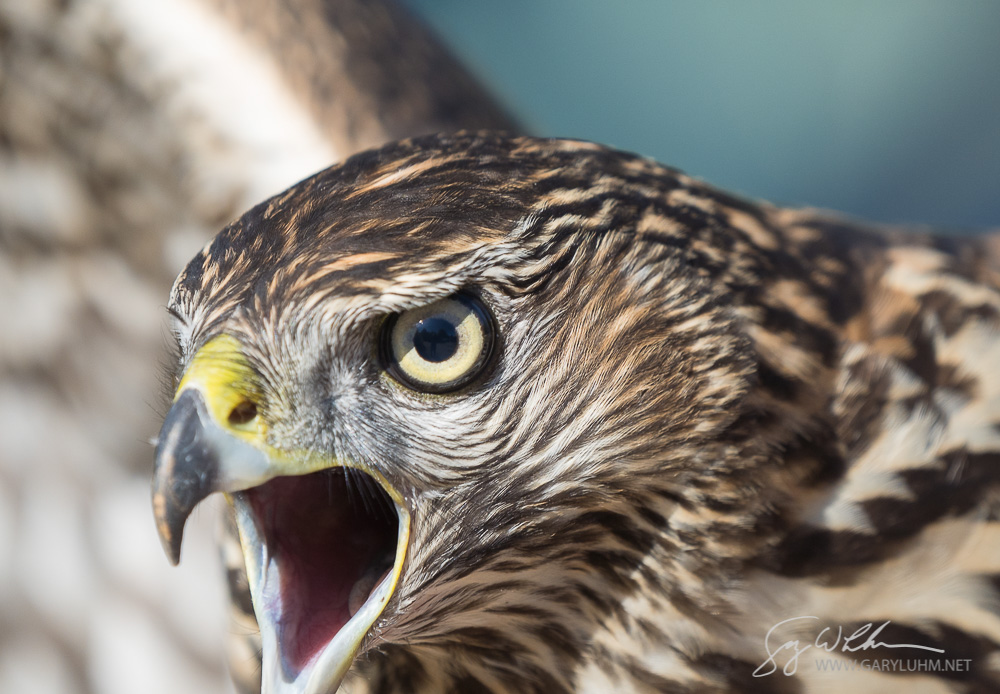
Goshawk. Kate and I visited the Chelan Ridge Hawk Watch site in late September, where for 20 years volunteers have counted migrating raptors. They also capture and band passers-by, in this case a juvenile Northern Goshawk, quite a find for us as we didn’t recall even seeing one in the wild. The captured bird, a large female that weighed 1058 grams (red-tailed hawk size!), exhibited a fierceness that I could never hope to capture with stills. The memory lingers.
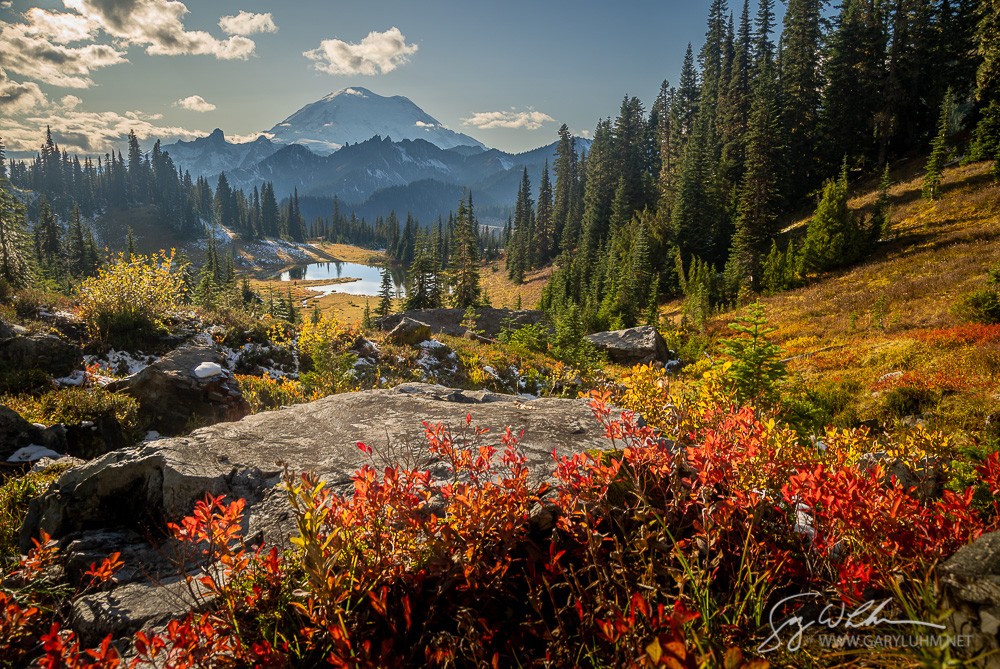
Depth. On an October day trip, Dan and I circled Mt. Rainier, with our last stop at Tipsoo Lake. Snow melting, and the sun peaking from behind clouds, I found a fall-color foreground for depth, with a compelling path for the eye that crosses lake and ridge toward the Mountain. In Photoshop I focus-stacked three images. Probably my favorite scenic of the year.
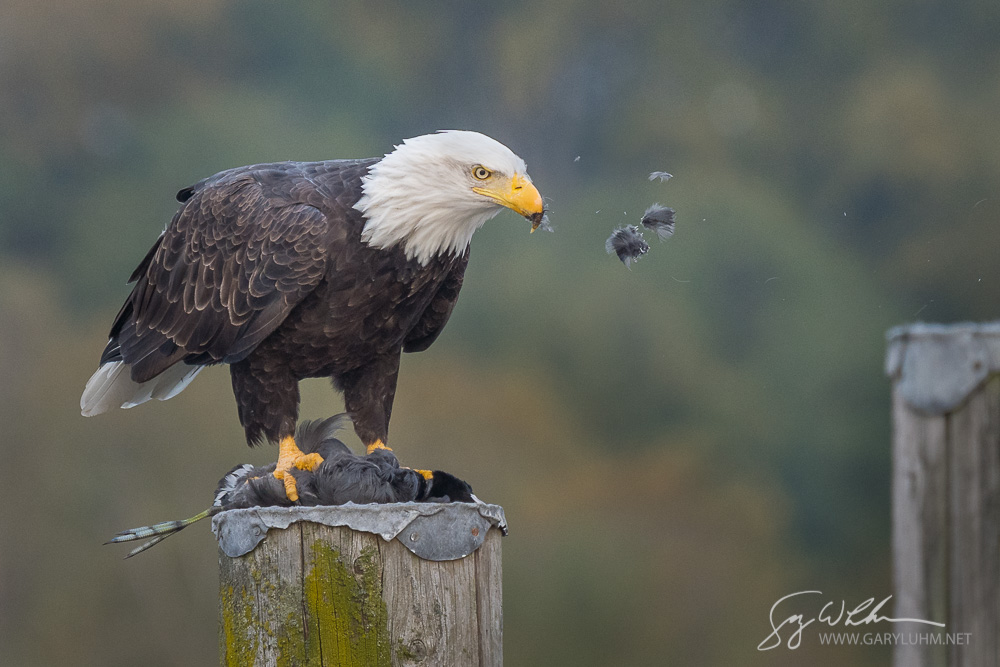
Early Winter. In October, coots are among the first to return to wintering habitat on Lake Washington. While kayaking on Union Bay, this Bald Eagle landed on a piling after plucking a hapless coot off the water. Bald eagle success rate hunting coots is quite high, especially when a tag-team─two eagles together─isolate and dive at a coot, who eventually tires from the relentless attack.
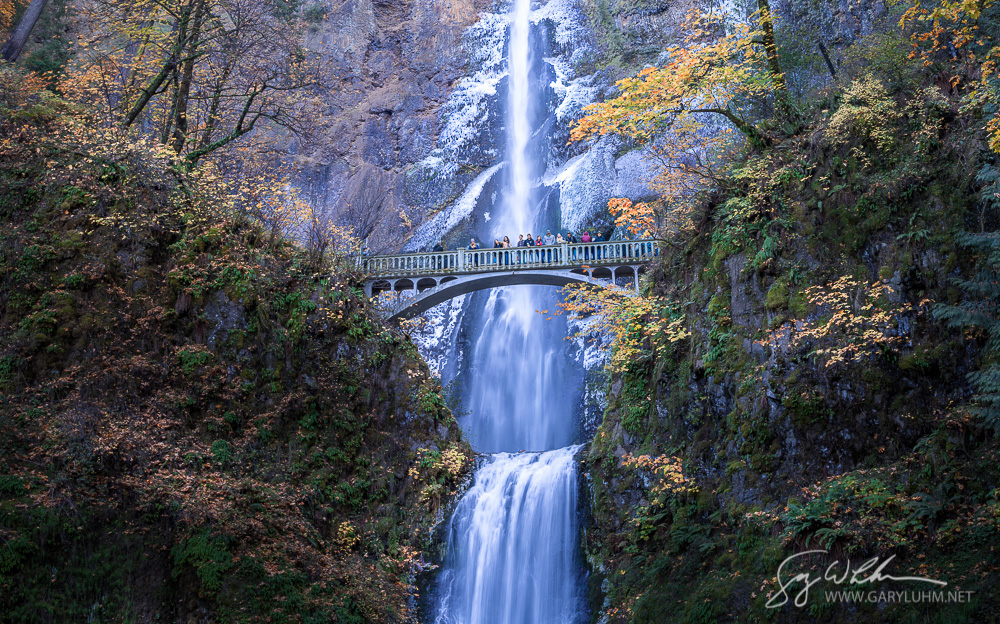
Ice Lined. End of October, and Kate and I visit the Oregon side of the Columbia Gorge. Our third stop was Multnomah Falls. Although the big-leaf maple leaves had mostly fallen, the ice aside the waterfall made an appealing scene. The shot became a keeper when a large number of visitors paused on the bridge.
Thanks so much for looking. Please feel free to leave a comment. If you have a particular favorite, let me know.
Gary
I loved all of them, with Virginia Rail and Depth being my top two!
Thanks, Mary. Those top my list as well.
Wow! You had a fantastic year of photography!
Mick
Thanks so much, Mick.
Excellent photos Gary. Many thanks.
Thanks, Barry. So nice to hear.
Great work.
Thanks for letting me tag along.
Haha. Who’s tagging. I rode shotgun in the Tesla. Fond memories of our pika and blue lake shoots.
Gary, these are so wonderful on so many levels. Thank you so much for assembling these incredible images.
Thanks, Nancy. I almost inserted the image you took of me in my kayak by way of introduction. But it did end up on my bio page. Thanks, again.
The Master continues to amaze……new equipment….smaller area….incredible images
as always!!
Andy, thanks so much. I’m still waiting to see so many dozens of your incredible images!
Great photos! Always enjoy your work!
Stunning Gary,
Thanks so much for reminding why I love the NW so much. I vote Blue Hour and Depth. But, heck, I’m forcing myself to choose when I love them all.
Thanks, Les. One of these days, we need to get out and kayak again.
I’m agog. You have a rare eye, Gary. I had no idea you guys were doing all this stuff!
Absolutely fantastic! Can’t pick a favorite. Thank you for sharing them!
Looks like you had a wonderful photographic year! Glad I got to be in on a piece of it.
Lin, thanks for being a star in some of my photos, including a favorite!
Excellent Photos Gary. Your collection shows a combination of creativity with the technical ability to capture it. Hard to pick a favorite, they are all favorites!
Love them all, but the grebe family and the jumping pika are my favorites. Thanks for sharing them.
Nice work as always Gary. Your images bring visual life to what we so often miss on our own.
Robert
Robert, thanks so much. Always I enjoy your images and your thoughtful explanations.
Fantastic as usual. I can’t pick a favorite, or even two or three.